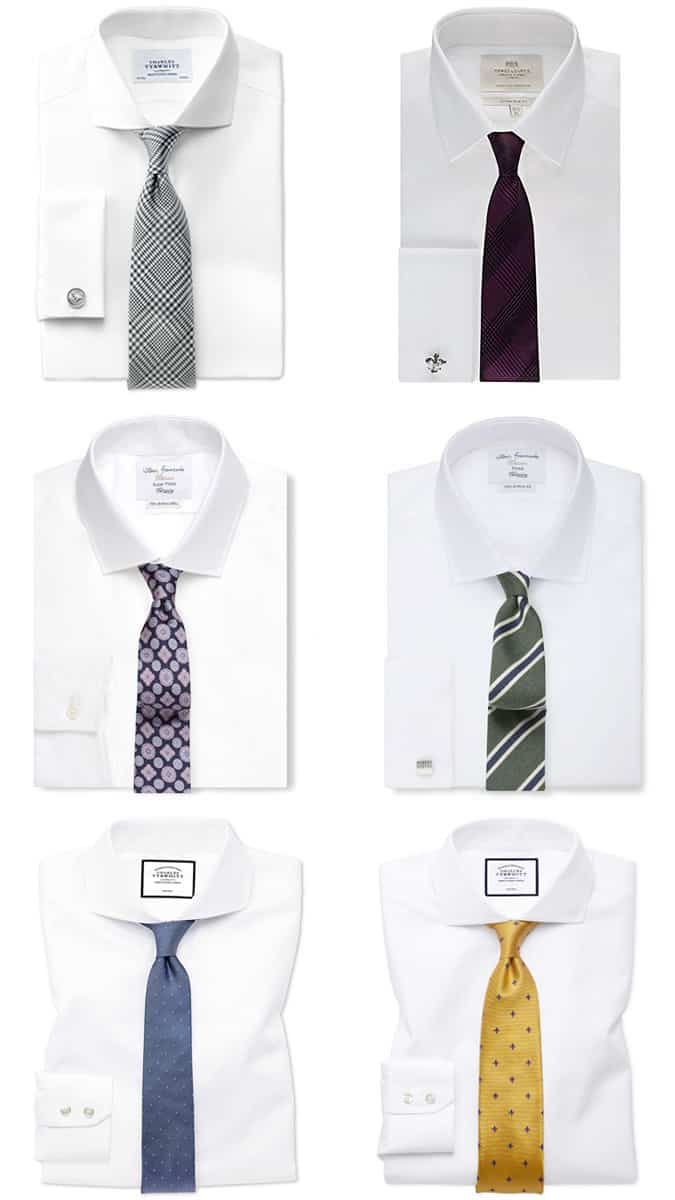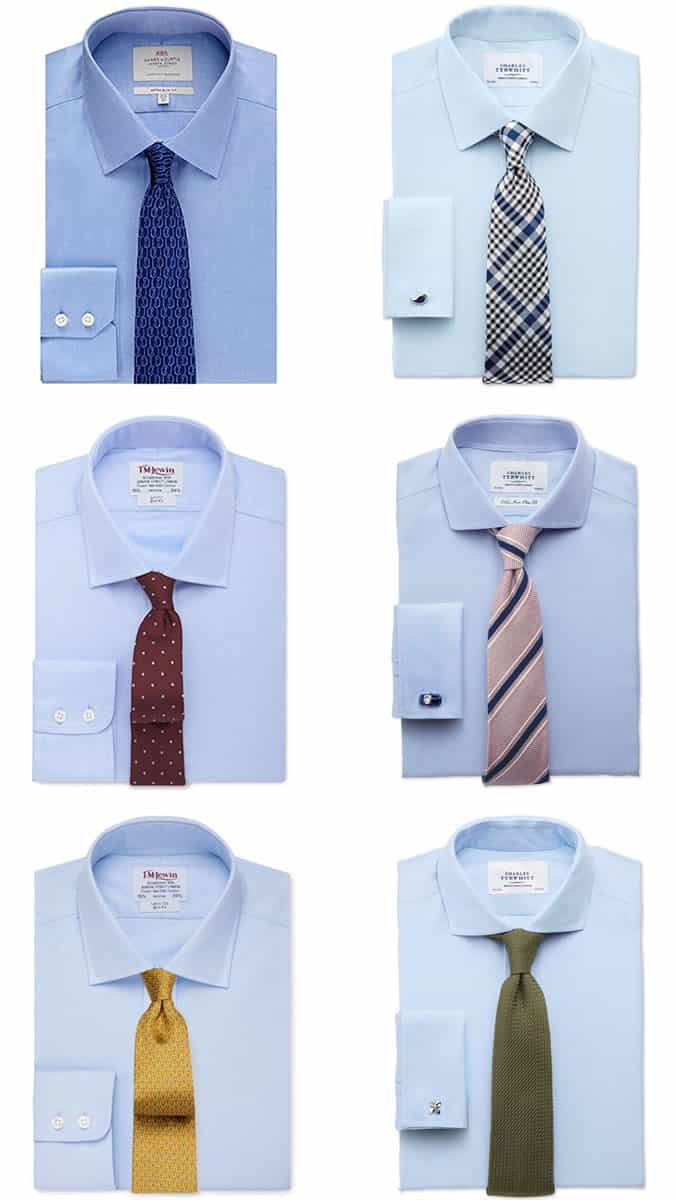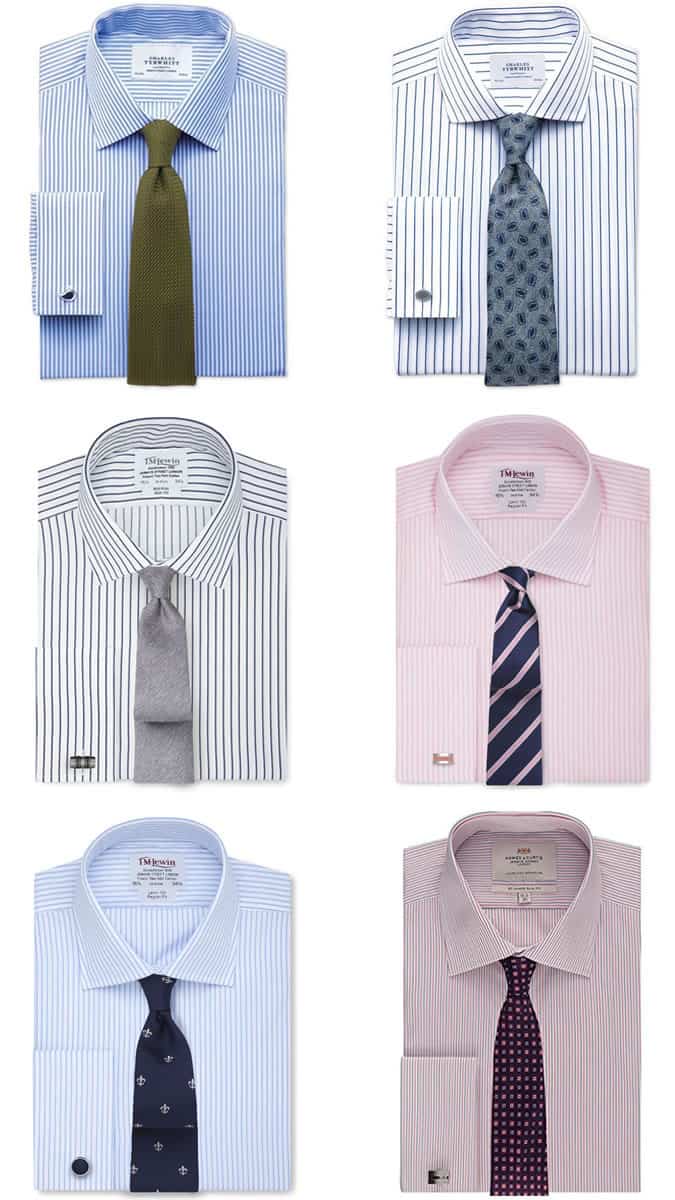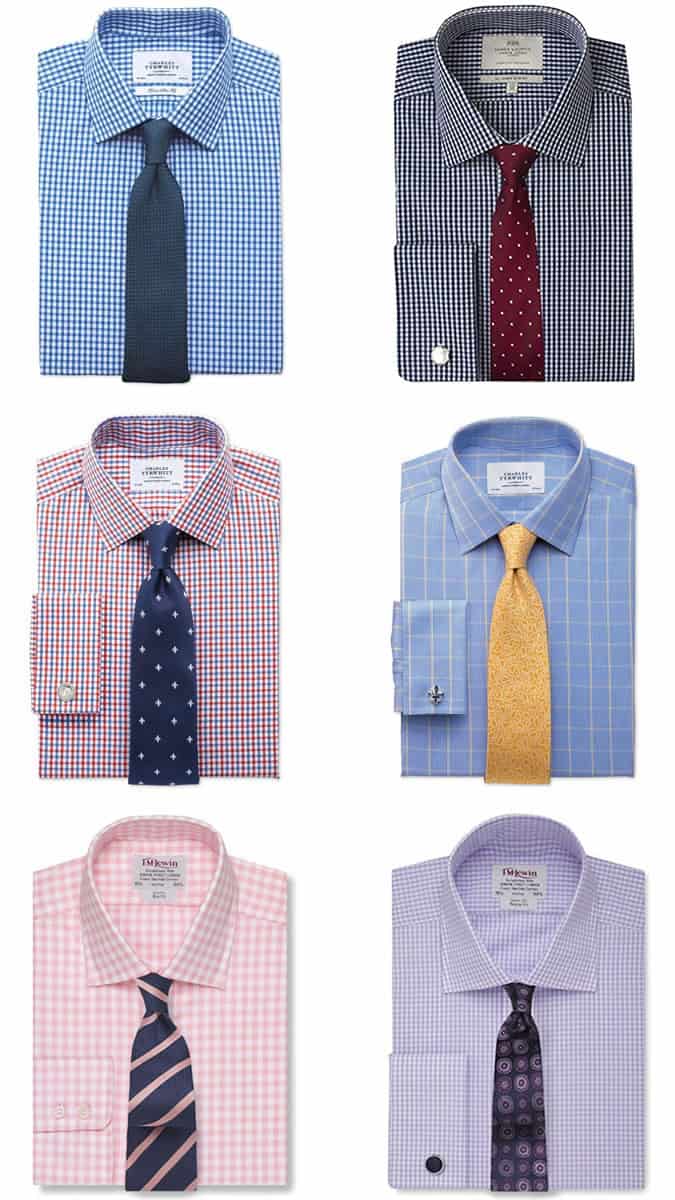

The paradox of choice (also known as choice overload) is the phenomenon by which having too many options exhausts us, makes us unhappy and generally leads us to make terrible decisions (if any decision at all).
Nowhere is this more evident in the male wardrobe than when it comes to shirts and ties. A quick glance around any workplace will confirm this. Is it possible that all these men have bad taste, or are they simply suffering from decision fatigue?
We get it, colours and patterns can be difficult to master individually, but when you start mixing them together, all hell can break loose. Which is why FashionBeans has put together a complete guide to shirt and tie pairings.
Shirt & Tie Combinations: Colour Wheel Basics
The concept of colour matching continues to stump even the most stylish of men. However, unless you want your work wardrobe to be very, very dull, you will at some point have to tackle the issue.
The tried-and-tested colour wheel offers a visual representation of every shade and, more importantly, the similar, complementary and contrasting colours of each.
Similar colours are next to each other. When colours are close to each other, it’s easy to pick one colour and add accessories in neighbouring colours.
Complementary colours are opposite each other. These colours are the hardest to pair together. Even though they ‘complement’ each other, wearing them full strength is often overkill.
Contrasting colours have three colours between them. The best way to combine these is to make sure one of the hues is in a darker tone so, such as navy and red.
Shirt & Tie Combinations: Colour Pairing Guidelines
When it comes to shirts and ties, it’s often easier to pair contrasting colours than it is complementary. For example, a mid-blue shirt and burgundy tie (red is a contrasting hue) worn under a navy, single-breasted type of suit is a look that every man can pull off.
When working with complementary colours, the key is to vary the shades, such as a light blue shirt with a darker, burnt orange tie. Of course, this will already be second-nature because a tie should always be darker than the shirt, without exception.
The easiest and safest option is to combine a simple tie with a white shirt – but where’s the fun in that? Experiment with colours and patterns, and you will quickly learn what works and what doesn’t, eventually creating some go-to shirt and tie combinations that you can reach for on a daily basis.
Tie Selection
In this sartorial marriage, the tie is always going to be the first thing people notice. Therefore, it pays to give it some attention and invest in quality. That doesn’t have to mean expensive, but it does mean tasteful. While you want a tie that looks great on its own (though we’d never recommend wearing it as such), it shouldn’t be a novelty piece.
Size is another key consideration. In general, the width of the tie should match the width of the lapels on the suit it’s being worn with, which, in turn, should complement your body type. Lastly, always tie a tie in a way that fits both your face shape and the type of collar on the shirt.
When selecting a fabric for your tie, consider the occasion. Traditional silk ties tend to be reserved for formal business settings, while more textured fabrics such as wool work well for smart- and business-casual events. Knitted ties, the rebellious younger brother of the tie world, fall into a somewhat helpful grey area. They can be either dressed up or down depending on what they are worn with – be it a bespoke suit or cardigan.
What Tie To Wear With Plain Shirts
Along with raw denim and quality shoes, well-cut cotton shirts are one of the main workhorses of the male wardrobe. By default, every man should own three colours: white, sky blue and pink.
White shirts offer maximum versatility, serving as a blank canvas for almost any tie, be it a preppy stripe, tartan check or solid knitted version. It’s here that more characterful designs can be deployed without fear of putting a foot (or, rather, neck) wrong.

What Tie To Wear With Blue Shirts
Shirts in blue or pink provide a chance show off your colour-matching prowess. Sticking to the rules of colour, size and fabric, light blue shirts work well with tonal, patterned or textured ties in the same family.
Orange is a complementary colour, though it’s wise to opt for a darker, burnt orange shade to avoid being mistaken for an airline worker.
Both yellow and red are contrasting hues, so ties in shades of burgundy, pink or mustard also look great set against this shirt colour.
Green is a similar colour to blue – so try a dark forest green tie to make a refined and effortless statement.

What Tie To Wear With Pink Shirts
Men wear pink. If that statement sounds alien to you, we suggest you get on board pronto, or risk missing out on an extremely versatile piece of workwear.
Similar colours include mauve and purple. Opt for either of these in a deep shade, and you can’t go wrong.
Green is complementary, and therefore khaki shades are a bold choice that will make you stand out for all the right reasons in the office.
Blue, on the other hand, is a contrasting colour and we would argue that there is no better pairing than a pink shirt with a predominantly navy tie, whether solid or patterned.

What Tie To Wear With Black Shirts
No longer just for mobsters and stage hands, black shirts have returned from the sartorial hinterland in recent years.
What makes things difficult here is that black doesn’t appear on the colour wheel (on account of being the absence of colour and therefore not a colour itself.)
This explains why the only colour tie that can realistically be paired with a black shirt is a tonal one.
For an easier, but less formal, option, ditch the tie altogether and wear it buttoned to the top under a black suit jacket.

What Tie To Wear With Striped Shirts
Introducing a pattern to the shirt is where things become interesting. The standard rules around colour, size and fabric choice still apply, but there’s the added consideration of making sure whichever tie is added harmonises rather than fights with the shirt for attention.
The easiest way to avoid this is to wear a tie in a block colour. However, if you’re looking to branch out into pattern-mixing, there is one simple rule to follow: always vary the size of the patterns. Just as the tie should be darker than the shirt, the pattern should be larger or smaller than that on the shirt.
Stripes can work well with other stripes, so long as they aren’t the same size. For instance, a thin pencil stripe shirt is the perfect anchor for a larger club stripe tie. Another great tip is to vary the orientation of the stripes combined. For instance, a vertical striped shirt pairs best with a horizontal or diagonal striped tie as it offers a clear contrast between each piece.
For a move of higher sartorial difficulty, progress onto polka dots, paisley and geometric designs. All are fair game providing the basic principles are adhered to.
Whether opting for a solid or pattern, picking out the colour of the shirt’s stripe and matching it with one of the hues on the tie helps pull the entire look together and marks you out as a man that pays attention to detail.

What Tie To Wear With Checked Shirts
It might seem logical that combining a check shirt with a patterned tie would follow a similar set of rules to those of the striped shirt. But this isn’t the case. While a striped shirt can work with a bigger or smaller pattern, a check shirt always requires a tie with a larger pattern to avoid it becoming lost. The only exception to this rule is a windowpane check shirt, which offers greater flexibility due to the scale being so large and the pattern so subtle.
Gingham check shirts are the most traditional and dress code-friendly available. More often than not, this pattern features a white base with an overlaying colour. When picking a similar, contrasting or complementary shade tie, look to coordinate it with the check colour rather than the white base. For example, a navy tie looks great with a sky blue or pink gingham check shirt.
If opting for a larger tartan or plaid shirt, the key is to pick out one of the more subtle base tones in the shirt with a solid, block-colour tie. Just remember to keep the shade darker than the shirt itself.
Striped ties are a perfectly acceptable choice to combine with check shirts. Choose a tie with a large, bold stripe so that it can easily stand out against the pattern of the shirt. Polka dots and paisleys can also work well providing the same principle is followed.

What Tie To Wear With Textured Shirts
In recent years, a growing number of companies have adopted business-casual or even smart-casual dress codes, making room for a new set of power players in the workwear roster.
Toning down a blazer with shirts in casual fabrics like chambray, denim and flannel has become a go-to move for guys who want to say: ‘I conduct my business with a bit of character’. Yet this new-found freedom doesn’t come without its own set of rules, particularly when concerning tie selection.
While many other pairings rely on creating contrast, tactile shirts require equally tactile ties. The usual guidelines around colour remain in place, but steer clear of silk ties or anything else with a sheen. Pairing a non-traditional dress shirt with a traditional tie only creates a disjointed look.
Knitted or woollen ties should be the go-to choice here, the classic combination being a button-down chambray shirt with either a navy knitted or grey wool tie; both perfect for a more relaxed job interview.
In the case of linen shirts, the advice is often to swerve ties altogether. The lightweight fabric of the shirt with the heavier weight of the tie usually results in an unbalanced look. So in place of something knotted at the neck, give the air-tie a go. Hey, it still has the word ‘tie’ in it.

Be the first to comment